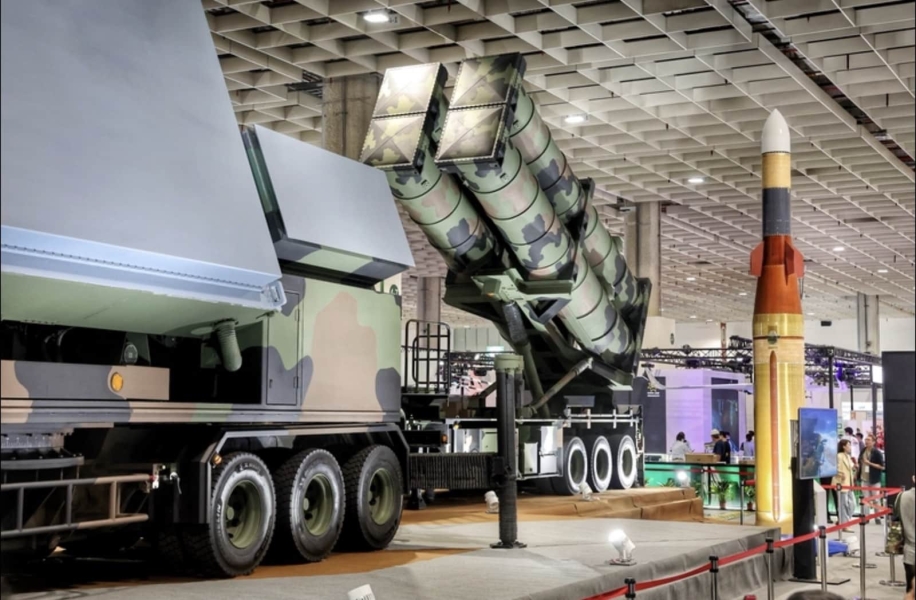Taiwan’s New “T-Dome” Puts Counter-Drone Defense At Center Of China Deterrence Strategy

Taiwan’s newly unveiled “T-Dome” air defense system places counter-drone capabilities at the heart of the island’s military modernization, responding to escalating Chinese drone incursions with an integrated approach that combines traditional missile defense with cutting-edge anti-UAV technology. Defense Minister Wellington Koo announced Monday that the system will establish a more efficient “sensor-to-shooter” mechanism designed to intercept everything from ballistic missiles to small quadcopters.
The announcement comes as Taiwan’s Ministry of National Defense declared anti-drone measures a “top priority” in its latest defense report, revealing the island is training soldiers to shoot down drones and actively procuring new counter-UAS weapons systems.
Why Counter-Drone Defense Matters Now
Chinese military drones have become a persistent gray-zone threat to Taiwan. At peak tensions, Taiwanese defense contractors detected as many as 100 Chinese surveillance drones flying over the island in a single week. China has ramped up drone incursions into Taiwan’s air defense identification zone, using unmanned aircraft as a tool of intimidation short of direct military action.
Koo emphasized the integration challenge: “If we don’t integrate anti-missile, anti-air and anti-drone capabilities, we won’t be able to achieve efficient interception. We will prioritize procurement that emphasizes mobility and high survivability.”
The economics are stark. Taiwan can’t afford to fire million-dollar Patriot missiles at $10,000 commercial-grade drones. T-Dome addresses this by layering different defensive systems matched to different threats.
Taiwan’s Indigenous Counter-Drone Industry
At the center of Taiwan’s drone defense push is Tron Future Tech, the sole prime contractor for Taiwan’s Drone Defense National Team. The startup secured a major contract in January 2025 for 26 advanced anti-drone systems deployed across Taiwan’s outlying islands—some as close as 1.2 miles (2 km) from mainland China.
Tron Future’s platform combines Active Electronically Scanned Array (AESA) radar with RF detection, offering drone detection ranges up to 3.7 miles (6 km). The system weighs just 33 pounds (15 kg), making it highly portable for rapid deployment. The company now produces more than 100 anti-drone systems monthly and has already deployed units at critical infrastructure including the Hsinchu Science Park.
“Taiwan is preparing to have some of the world’s most comprehensive drone-defense capabilities in all major military and civilian infrastructure,” Tron Future CEO Yu-Jiu Wang told Defense News.
The systems use AI to distinguish between quadcopters and cruise missiles in milliseconds, automatically assigning the appropriate countermeasure. They can counter frequency-hopping drones and handle swarm attacks through sophisticated sensors and distributed control systems.
T-Dome’s Layered Defense Architecture
Beyond Tron Future’s systems, T-Dome integrates multiple layers of defense. The medium tier includes U.S.-supplied NASAMS launchers—Taiwan signed a $761 million deal in February 2025 specifically to combat drones. Skyguard batteries bring 35mm Oerlikon guns with AHEAD programmable ammunition, creating shrapnel clouds that detonate in front of targets—proven effective against small drones and rockets.
President Lai Ching-te, who unveiled T-Dome on October 10, 2025, pledged to raise defense spending to 5% of GDP by 2030. A special year-end budget will detail specific T-Dome equipment procurement.
The system connects sensors and shooters across the island through AI-aided command networks, linking long-range early warning radar, mobile 3D sensors, and individual battery fire control into a unified defense picture.
The Chinese Drone Threat Evolves
China recently unveiled a combat drone converted from retired 1950s J-6 fighter jets—supersonic expendable drones that could overwhelm defenses through sheer numbers. With a 435-mile (700 km) range and carrying 550 pounds (250 kg) of munitions, these legacy aircraft-turned-drones represent a low-cost saturation attack capability.
Taiwan’s Defense Ministry report noted China “has significantly increased joint combat readiness patrols, maritime and air blockades, joint firepower strikes” as part of blockade preparations. Drones play an expanding role in these gray-zone tactics.
DroneXL’s Take
Taiwan’s counter-drone buildout offers a real-world case study in how nations defend against the democratization of air power. Unlike Ukraine, which had to develop drone defenses under fire, Taiwan is building comprehensive systems before conflict erupts—integrating everything from man-portable jammers to AI-driven detection networks.
The Tron Future story is particularly interesting for the drone industry. A startup founded in 2018 became Taiwan’s leading counter-UAS supplier in just seven years, now producing at scale and exporting to Ukraine. That trajectory shows how quickly drone defense has become a critical capability.
The broader strategic question is whether Taiwan’s investments create deterrence or accelerate a capability window that pressures China to act sooner. If Beijing perceives Taiwan’s drone and counter-drone systems reaching peak effectiveness by 2026, does that compress decision timelines? The drone arms race cuts both ways.
What’s clear: the era of treating small drones as toys is over. When a nation facing existential threats puts counter-drone capabilities at the center of a multi-billion-dollar defense system, the message is unmistakable—drone warfare has arrived, and defense against it is now mission-critical.
What do you think? Share your thoughts in the comments below.
